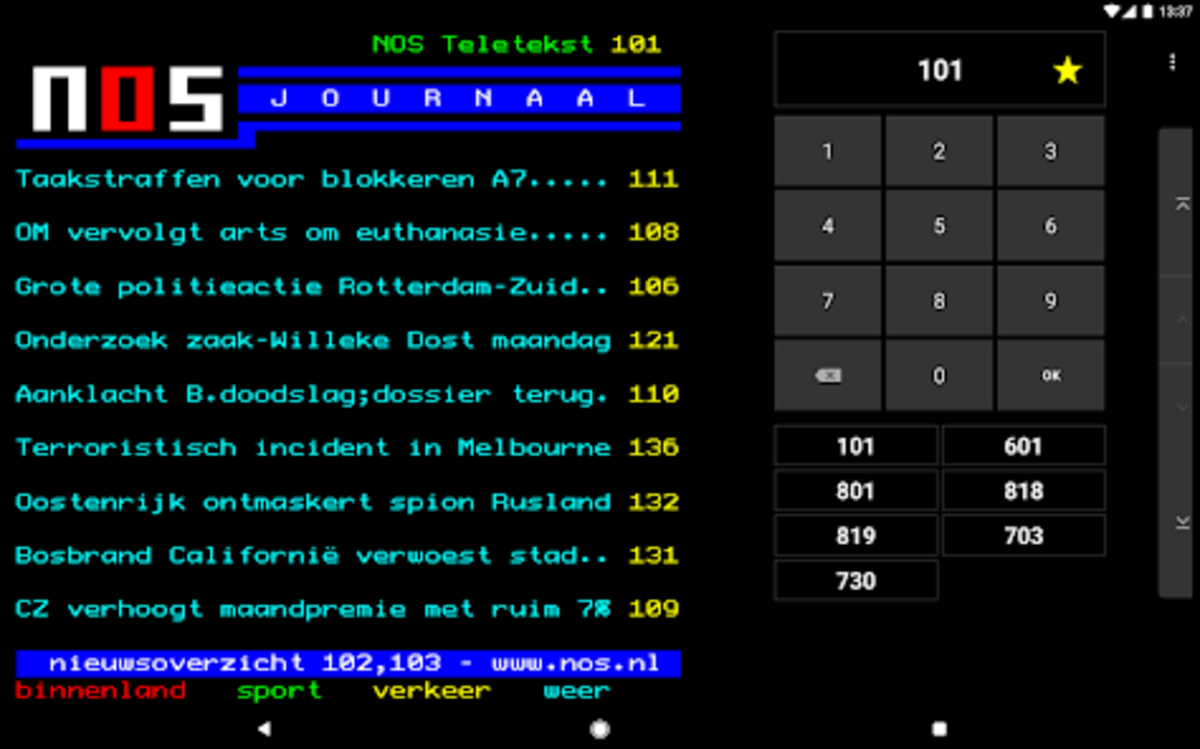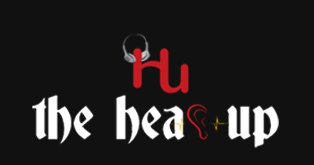POLITICS
Teletekst: The Legacy of Information Before the Internet Age

In an era defined by the rapid dissemination of information via Teletekst the internet and digital platforms, it’s important to remember the technologies that paved the way for the digital age. One such technology that played a significant role in providing real-time information to the masses before the advent of the internet is Teletekst. A relic of a bygone era, Teletekst stands as a testament to the ingenuity and utility of early data transmission systems.
Introduction to Teletekst
Teletekst, often referred to as “Ceefax” in the United Kingdom, was a text-based information retrieval service that was widely popular in Europe during the 20th century. Launched in the 1970s, Teletekst enabled television viewers to access a range of information, including news, weather updates, sports scores, stock market data, and more. The service utilized the vertical blanking interval of the television signal to transmit data, allowing users to access content by entering three-digit page numbers using their remote controls.
Teletekst, also known as teletext, is a text-based information retrieval system that has been available on television screens for several decades. It was developed to provide viewers with a variety of useful information in a simple and efficient format. While it has been largely overshadowed by the internet and digital media, teletekst still offers several benefits to users:
- Accessibility: Teletekst is readily accessible to anyone with a television and does not require an internet connection. This makes it a valuable source of information, especially in areas with limited internet access or during times of internet outages.
- Ease of Use: Teletekst is user-friendly and does not require technical expertise to navigate. Users can access information by simply entering a page number on their remote control, making it accessible to people of all ages.
- Real-Time Updates: Teletekst provides up-to-date information on a variety of topics, including news, weather, sports scores, and stock market data. Users can rely on it for timely information without the need for constant internet browsing.
- Multilingual Support: Many teletekst services offer information in multiple languages, catering to a diverse audience. This can be particularly useful for people seeking news and updates in languages other than their native tongue.
- Cost-Efficient: Since teletekst does not require an internet connection, it can be a cost-effective way to access information, especially for those who may have limited data plans or prefer not to incur data charges.
- Minimal Advertising: Teletekst typically has minimal advertising compared to many online platforms. This means that users can access information without being bombarded by ads, creating a more focused and distraction-free experience.
- Privacy: Using teletekst does not involve tracking user behavior or collecting personal data, as is common on the internet. This can be appealing to individuals concerned about online privacy.
- Emergency Alerts: Some countries utilize teletekst to broadcast emergency alerts and important information to the public during crises, such as natural disasters or national emergencies. This can be a critical communication channel in times of need.
- Complementary Information Source: Teletekst can complement other information sources, such as television news broadcasts. Viewers can access additional details, background information, and updates related to news stories they see on TV.
- Educational Resource: Teletekst often includes educational content, ranging from language lessons to historical facts. It can serve as a valuable learning tool for individuals looking to acquire knowledge in various subjects.
While teletekst may not be as widely used as it once was, it continues to offer valuable benefits to those who prefer its simplicity, accessibility, and minimalistic approach to delivering information. It remains a viable option for obtaining news, weather updates, and other useful information, particularly in situations where internet access may be limited or unreliable.
A Glimpse into the Past
Before the internet became ubiquitous, Teletekst was a revolutionary way to access real-time information without the need for a computer or a dedicated data connection. Viewers could turn to a dedicated channel on their televisions and navigate through a variety of pages to find the information they needed. The simplicity of the system and the ease of access made it a valuable tool for millions of people.
Teletekst pages were characterized by a distinctive blocky, pixelated aesthetic due to the limitations of early television technology. Despite these constraints, the system managed to convey information effectively, capturing the attention of audiences across Europe.
Diverse Information at Your Fingertips
Teletekst was a versatile platform that catered to a wide range of interests. News aficionados could stay updated on the latest headlines, sports fans could track scores and statistics, and travelers could access weather forecasts for various regions. The service also provided educational content, television schedules, and even interactive quizzes and games.
Teletekst’s accessibility was particularly important for people with disabilities. The text-based nature of the service allowed visually impaired individuals to access information in a way that was not readily available through other mediums at the time.
The Teletekst Community
Teletekst developed a unique community of users who relied on the service for their daily dose of information. As the precursor to modern social media, it allowed people to engage with content, share trivia, and discuss news topics of the day. While the interactivity was limited compared to today’s standards, it marked an early example of online community engagement.
Legacy and Transition to the Digital Age
The rise of the internet and digital media eventually overshadowed the relevance of Teletekst. As broadband connections and smartphones became more prevalent, the need for a dedicated information retrieval service diminished. Television broadcasters gradually phased out Teletekst services in the 2000s and 2010s, marking the end of an era.
However, Teletekst’s influence can still be felt today. Its simple and user-friendly interface served as a precursor to the design principles that govern modern websites and applications. Additionally, the concept of delivering real-time information to a broad audience laid the groundwork for the information-rich digital landscape we inhabit today.
Nostalgia and Lessons from Teletekst
While Teletekst has largely faded into history, it continues to evoke a sense of nostalgia among those who remember its pixelated pages and unique user experience. The simple act of waiting for pages to load, scrolling through information, and decoding the cryptic three-digit page numbers holds a special place in the hearts of many who grew up during its heyday.
Teletekst also teaches us valuable lessons about the evolution of technology and the adaptability of information delivery methods. In an era where high-speed internet and mobile devices dominate, it’s easy to forget the time when accessing information wasn’t as seamless as it is today. Teletekst highlights the ingenuity that was required to provide real-time updates in an analog world, laying the foundation for the digital advancements that followed.
Moreover, Teletekst reminds us of the importance of inclusivity and accessibility. In an age where digital content is primarily visual, Teletekst’s text-based approach provided a platform for everyone to access information, regardless of visual impairments or limitations. This commitment to inclusivity remains relevant as we strive to ensure that technology is accessible to all.
Preserving a Piece of History
Efforts to preserve the legacy of Teletekst are important for maintaining a connection to the past and understanding the roots of modern information dissemination. Archival projects, documentaries, and exhibitions help to capture the essence of Teletekst and its impact on society. By doing so, we ensure that future generations can appreciate the role it played in shaping the digital landscape we inhabit today.
In an era where technology evolves at an unprecedented pace, looking back at systems like Teletekst encourages us to reflect on how far we’ve come and to appreciate the innovations that paved the way for the conveniences we enjoy today. It serves as a reminder that even in a world of instant gratification, the evolution of technology is a journey that builds upon the successes and lessons of the past.
Conclusion: A Digital Time Capsule
Teletekst may be a relic of the past, but its influence extends far beyond its years of operation. It symbolizes an era when information was transmitted through analog means, capturing the imagination and attention of millions. As we navigate the complexities of the digital age, it’s worth pausing to remember the pixelated pages and the excitement of discovering the latest news, sports scores, and entertainment through Teletekst.
While the technology has evolved, the spirit of Teletekst lives on in the way we consume and share information today. Its legacy reminds us of the transformative power of technology, the importance of inclusivity, and the enduring impact of innovations that have shaped our modern world. Teletekst is more than just a service; it’s a digital time capsule that offers a glimpse into a time when simplicity and innovation converged to create a unique experience for generations of users.
Conclusion
Teletekst may be a relic of the past, but its impact on the dissemination of information and the evolution of digital media cannot be overstated. Before the internet era, it was a vital tool that empowered people to access news, entertainment, and valuable data from the comfort of their homes. Teletekst’s legacy lives on in the technologies and design principles that shape our current digital experiences, reminding us of the journey from pixelated text on television screens to the vast, interconnected world of the internet.

The Hear UP is a leading technology publication house. Our origin dates back to 2016 as a small forum for technology enthusiasts. Since then, The Hear UP has transformed into a trusted source for emerging tech and science news.
The majority of our news is provided by staff writers. Other news is provided by news agencies and freelancers.
All of our contributors are members of the Society of Professional Journalists.
If you need to contact a news editor from The Hear UP you can find a list of email addresses on our contact page.
Our Organisation
The Hear UP










